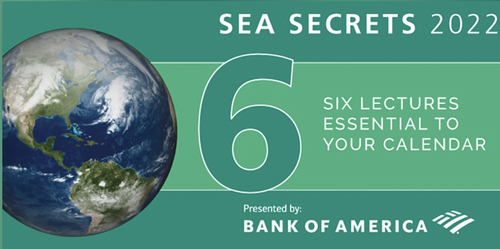Sea Secrets Lecture at RSMAS
Name:
Sea Secrets Lecture at RSMAS
Date:
January 18, 2022
Time:
7:00 PM - 8:00 PM EST
Website:
rsmas.miami.edu

Event Description:
Travel the world with distinguished scientists and explorers at the edge of discovery during this series of evening programs designed for the non-scientific community.
SAM PURKIS, Ph.D., Professor at the Rosenstiel School of Marine and Atmospheric Science
Beauty and Peril in the Red Sea
Termed a maritime rift, the Red Sea is unique on the modern Earth and an excellent analog to the opening of the Atlantic Ocean as the supercontinent Pangea broke up beginning about 200 million years ago.
Rifts represent a perfect natural laboratory in which to study plate movements, and because the deep, narrow basins that they produce represent a rare biosphere. The coral reefs which inhabit the Red Sea, for instance, are remarkable in their diversity and resiliency to climate change. The Red Sea’s beauty is balanced by peril, however. The steep sides of the rift basin are fragile, seismically active, and submarine landslides can spawn tsunamis as large as those of Earth’s most powerful earthquakes. Whereas the arid coastline of the Red Sea was sparsely inhabited in antiquity, it is now urbanizing rapidly, and there is compelling urgency to understand the natural hazards that accompany Earth’s only maritime rift basin. Dr. Purkis’ research currently focuses on fundamental questions about the health and resilience of coral reefs. In particular, the role that spatial self-organization plays in their patterning and architecture. Beyond better understanding the processes that sculpt reefs, his work also strives to develop pragmatic tools for ocean conservation - from satellite and aircraft observation, marine acoustics, GIS, carbonate geology, coral reef ecology, software development, and mathematical simulation. Dr. Purkis has authored three books and more than 120 publications.
